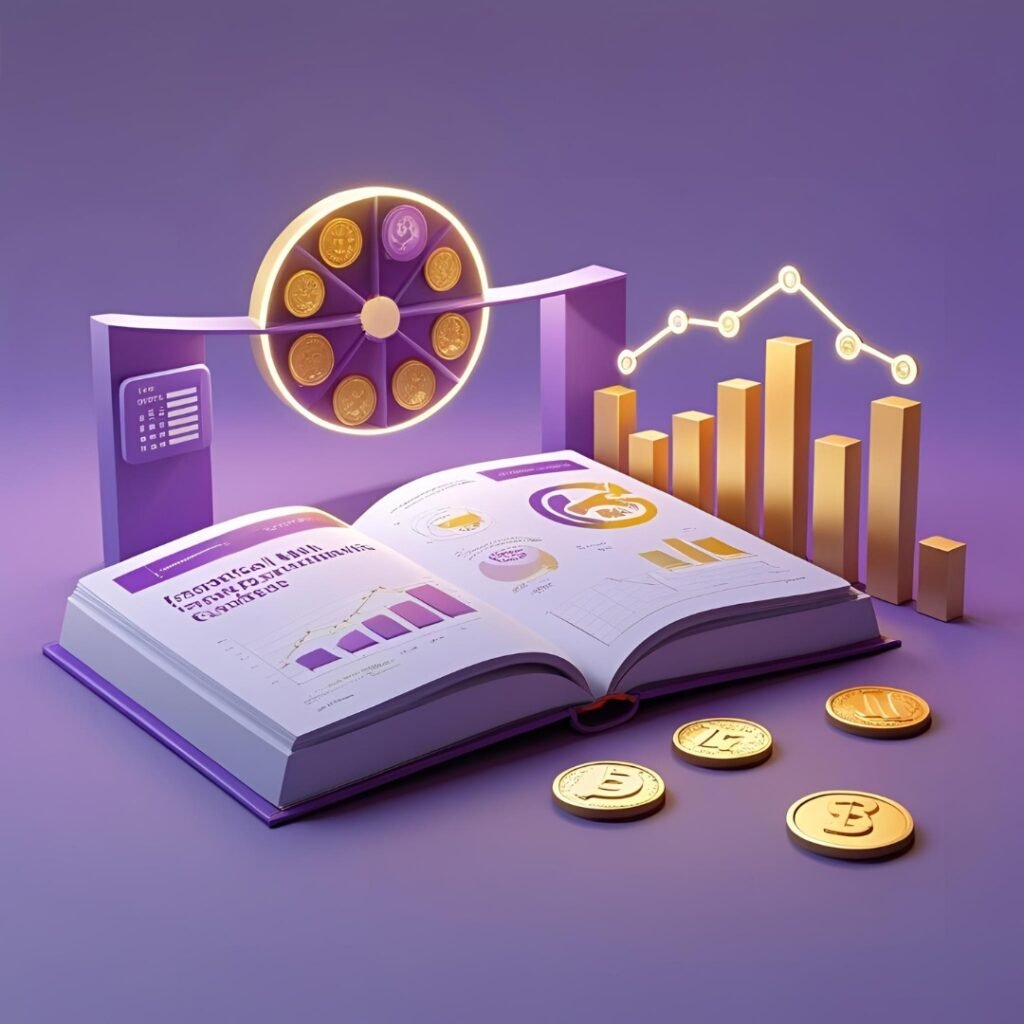Financial mathematics is a branch of mathematics that deals with the application of mathematical concepts and techniques to problems involving money, interest, investment, taxation, and other financial topics. Financial mathematics is an important skill for anyone who wants to manage their finances, pursue a career in business, economics, or finance, or simply understand how money works.
In this article, we will discuss what IGCSE Financial Mathematics is, what topics it covers, why it is useful, and how to prepare for it. We will also share some tips and resources to help you ace the Financial Mathematics exam.
What is IGCSE Financial Mathematics?
IGCSE Financial Mathematics is a syllabus option within the Cambridge IGCSE Mathematics (0580) course. It is designed to develop learners’ competency, confidence, and fluency in using mathematical techniques to solve problems in financial contexts. It also aims to cultivate learners’ understanding of how to communicate and reason mathematically.
IGCSE Financial Mathematics covers the following topics:
- Compound interest and depreciation
- Exchange rates and currency conversion
- Profit and loss
- Simple interest
- Hire purchase
- Taxation
- Personal and household finance
- Ratio and proportion
- Percentages
- Reverse percentages
- Compound measures
- Speed, distance, and time
- Maps and scale drawings
- Bearings and loci
Financial Mathematics is assessed by two written papers: Paper 2 (Core) and Paper 4 (Extended). Paper 2 is for candidates who are expected to achieve grades C to G, while Paper 4 is for candidates who are expected to achieve grades A* to E.
Both papers are 1 hour and 30 minutes long and have 80 marks. Paper 2 has 21 questions and Paper 4 has 23 questions. Both papers have a mixture of short-answer and structured questions, some of which require the use of a calculator.
Why is IGCSE Financial Mathematics useful?

IGCSE Financial Mathematics is useful for several reasons.
- First, it helps learners to develop their mathematical ability as a key life skill, and as a strong basis for further study of mathematics or to support skills in other subjects.
- Second, it helps learners to develop their feel for quantity, patterns, and relationships, and to encourage their reasoning and analytical skills.
- Third, it helps learners to apply their mathematical knowledge and skills to solve problems in realistic and relevant financial situations.
- Fourth, it helps learners to present and interpret their results in appropriate ways, and to understand how to communicate and reason mathematically.
It can also benefit learners in various ways beyond the classroom. For example, it can help learners to:
- Manage their finances, such as budgeting, saving, investing, borrowing, and paying taxes.
- Make informed decisions about financial products and services, such as bank accounts, credit cards, loans, mortgages, insurance, and pensions.
- Understand the impact of economic factors, such as inflation, interest rates, exchange rates, and taxation, on their financial situation and the wider society.
- Appreciate the role and importance of mathematics in the world of finance, business, and economics, and the opportunities and challenges it offers.
How to prepare for IGCSE Financial Mathematics?

To prepare for IGCSE Financial Mathematics, you need to follow these steps:
- Review the syllabus and the learning objectives: The first step is to review each topic’s syllabus and learning objectives on the official website. This will help you to understand what you are expected to know and do, and how you will be assessed.
- Study the concepts and techniques: The second step is to study the concepts and techniques for each topic, using textbooks, notes, videos, or online resources. You should learn the definitions, formulas, rules, and methods that are relevant to each topic, and how to apply them to different types of problems.
- Practice the skills and methods: The third step is to practice the skills and methods for each topic, using worksheets, questions, or past papers. You should practice the calculations, manipulations, and problem-solving skills that are required for each topic, and check your answers and solutions using answer keys, mark schemes, or worked examples.
- Identify your strengths and weaknesses: The fourth step is to identify your strengths and weaknesses for each topic and focus on the areas that need improvement. You should review your performance and progress, and identify the topics or questions that you find easy or difficult, and why.
- Revise the topics regularly: The fifth step is to revise the topics regularly, using flashcards, summaries, or quizzes. You should review the key points and concepts for each topic, and test your recall and understanding using various tools and techniques.
- Test your knowledge and understanding: The sixth step is to test your knowledge and understanding of each topic, using mock exams, timed tests, or online assessments. You should simulate the exam conditions and format, and assess your readiness and confidence for the real exam.
- Review your feedback and errors: The seventh step is to review your feedback and errors for each topic and learn from your mistakes. You should analyze your results and feedback, and identify the errors or gaps in your knowledge or skills, and how to avoid or correct them.
- Seek help and guidance: The eighth step is to seek help and guidance from your teachers, tutors, or peers if needed. You should ask for clarification, explanation, or assistance whenever you encounter any difficulties or doubts, and learn from others’ experiences and insights.
Tips and resources to ace IGCSE Financial Mathematics:
Here are some tips and resources to help learners ace IGCSE Financial Mathematics:
- Use a scientific calculator that is allowed by the exam board, and know how to use its functions and features effectively.
- Show all the working and reasoning clearly and logically, using appropriate symbols, units, and notation.
- Check the accuracy and reasonableness of the answers, and round them to the required degree of accuracy.
- Read the questions carefully and understand what is given, what is asked, and what is implied.
- Use the information and data given in the questions, and do not make any assumptions or use any external sources.
- Choose the most suitable and efficient method to solve the problems, and justify the choices if required.
- Use diagrams, tables, graphs, or charts to help visualize, organize, or present the information or results, if appropriate.
- Use estimation, approximation, or checking techniques to verify or simplify the calculations.
- Review the mark allocation and the time limit for each question, and allocate the time and effort accordingly.
- Practice as many questions and papers as possible, under exam conditions, and review the performance and progress.
Conclusion:
IGCSE Financial Mathematics is a syllabus option in the Cambridge IGCSE Mathematics course that focuses on developing mathematical skills for financial problems. It covers topics like compound interest, exchange rates, profit and loss, taxation, and personal finance.
To prepare, learners should review the syllabus, study concepts, practice, and seek help. Resources like scientific calculators, careful reading, and using diagrams can help. Practice and review marks, time limits, and exam websites can also help.
Do you need help with IGCSE Financial Mathematics? Contact Litera Centre for online tuition. We have qualified and experienced tutors to guide you.
Frequently Asked Questions ( FAQ )
Q: What is the easiest way to understand financial math topics?
If compound interest feels like a puzzle, you’re not alone — it confuses many IGCSE students. Break each topic into smaller parts, use real-life examples like savings accounts or loans, and practice with calculator techniques.
Q: How can I improve my speed and accuracy in exams?
Timing is everything — even top students struggle to finish papers. Practice timed past papers weekly, learn shortcuts for percentage calculations, and get familiar with your calculator’s functions.
Q: Which IGCSE financial math formulas should I memorize?
Around 8–10 core formulas show up repeatedly in exams, including compound interest, depreciation, and currency conversion. Don’t just memorize — understand how and when to apply them.
Q: Are there any real-world applications of IGCSE financial math?
Absolutely! From figuring out discounts while shopping to understanding bank loans and tax, financial math is used daily. Using real examples makes concepts easier to remember.
Q: What are common mistakes students make in IGCSE financial math?
Small errors like incorrect decimal placement or forgetting to convert percentages cost big marks. Many students also skip checking their final answer with units.
Q: Can I use a calculator in IGCSE financial math exams?
Yes — and knowing your calculator well can save you minutes per question. Practice using its percentage, power, and memory functions before the exam.
Q: Where can I find good practice resources for financial math?
Cambridge past papers and worksheets from platforms like Save My Exams or Physics & Maths Tutor are goldmines. Use them to spot patterns in question types.



